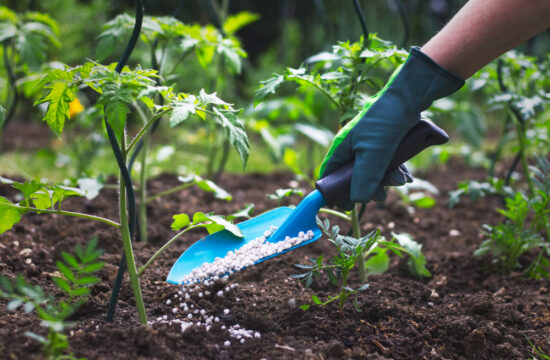Biostimulants are natural derivative substances that aid plant growth and development, improving their nutrient use efficiency, crop yield, quality, health, and their ability to tolerate abiotic stress. These components can include everything from seaweed extracts and inorganic compounds to advantageous fungi and bacteria. They are not recognized as fertilizer, nor have any pest-killing properties. With the growing demand for high-quality crops expected to double by 2050 with the addition of two billion people on the planet, expectations of farmers and their ability to produce high-quality crops are rising, creating a rise in the biostimulant market.
What Are Biostimulants?
The EPA recently drafted this definition, “Plant biostimulants are products containing naturally occurring substances, microorganisms, or their synthetic equivalents that, when applied to seeds, plants, or the rhizosphere, stimulate natural processes to enhance nutrient uptake, nutrient efficiency, tolerance to abiotic stress, or crop quality and yield.”
Biostimulants can influence a plant’s vigor and yield but do not manage or protect against pests and other detrimental factors to plant quality like weeds, disease, or insects. They are also in a separate category from Plant Growth Regulators, which are chemicals that alter plant growth. These chemicals are regulated by the EPA, which provides guidance for their use.
Categories of Biostimulants
While there is no federal definition of biostimulants, there are several widely accepted categories that biostimulants can fall into. View these components in-depth below.
1. Protein Hydrolysates:
Amino acid compounds are created through chemical and enzymatic methods commonly associated with protein hydrolysis from crop residue and animal excrement. These essential amino acids and peptides are commonly referred to as the building blocks of protein.
2. Humic and Fulvic Acids:
As organic soil matter breaks down, these acids are present in the soil. This can be due to the decay of plant, animal, and microbial residues, and the biochemical reactions of soil microbes like bacteria and fungi.
3. Seaweed Extracts & Botanicals:
Seaweed extracts and botanicals have been used for centuries, but are now only recently being studied as biostimulants. When used in soils, seaweed can increase water retention.
4. Chitosan & Other Biopolymers:
Chitosan is extrapolated from the biopolymer chitin, which is a fibrous substance used in the cell walls of fungi. In the agricultural sector, chitosan has been used to increase plants’ ability to handle abiotic stressors like cold and hot weather conditions.
5. Inorganic Compounds:
Elements like silica, selenium, cobalt, sodium, and aluminum can strengthen a plant’s cell walls and encourage growth.
Benefits of Biostimulants
Discover the multiple benefits of effectively utilizing biostimulants for plants.
1. Biostimulants help protect against the effects of environmental stresses.
Biostimulants can help influence a plant’s response to stress and adverse changes in its environment. They can stimulate plant growth by increasing germination and root development. This allows plants to better access water and minerals.
2. Biostimulants help increase grain or fruit fill and quality.
Plants like corn rely on biostimulants to advance grain fill—the period between pollination to when kernels are fully matured. Biostimulants can optimize grain fill by boosting drought protection during the vital grain fill phase, allowing the plant to take in more water. They can also aid in coloring fruit and postharvest quality.
3. Biostimulants encourage plant growth.
Biostimulants can contain particular growth-promoting bacteria for increased crop yields. When applied to the seed, biostimulants have been known to increase the leaf area, height, and development of seedlings.
Verdesian Solutions
At Verdesian, we use the latest science to transform agriculture and improve the health of crops. Our products are used in a wide range of crops to maximize yield, improve crop quality, increase nutrient availability, and much more. Contact us today to learn more!


